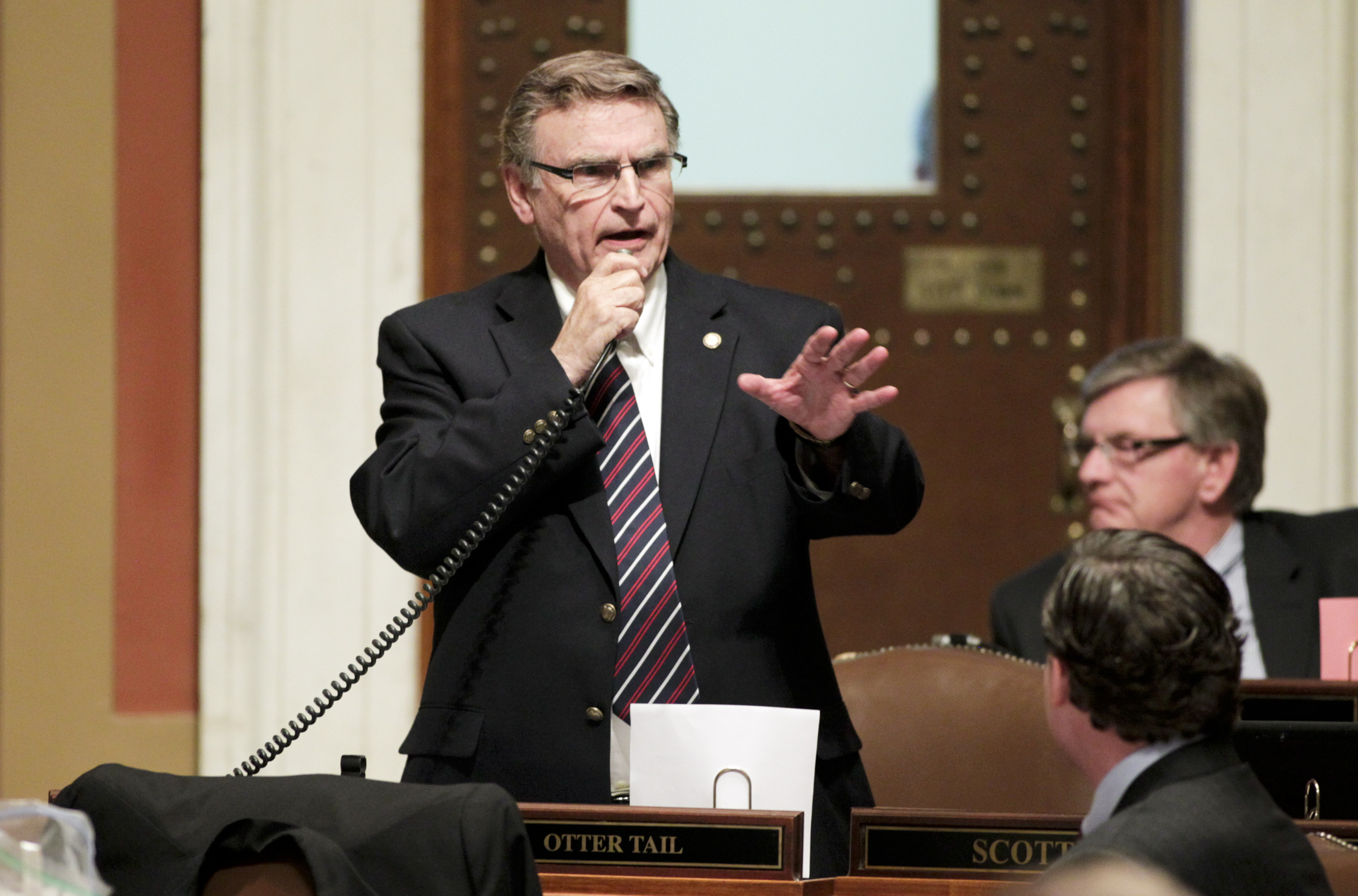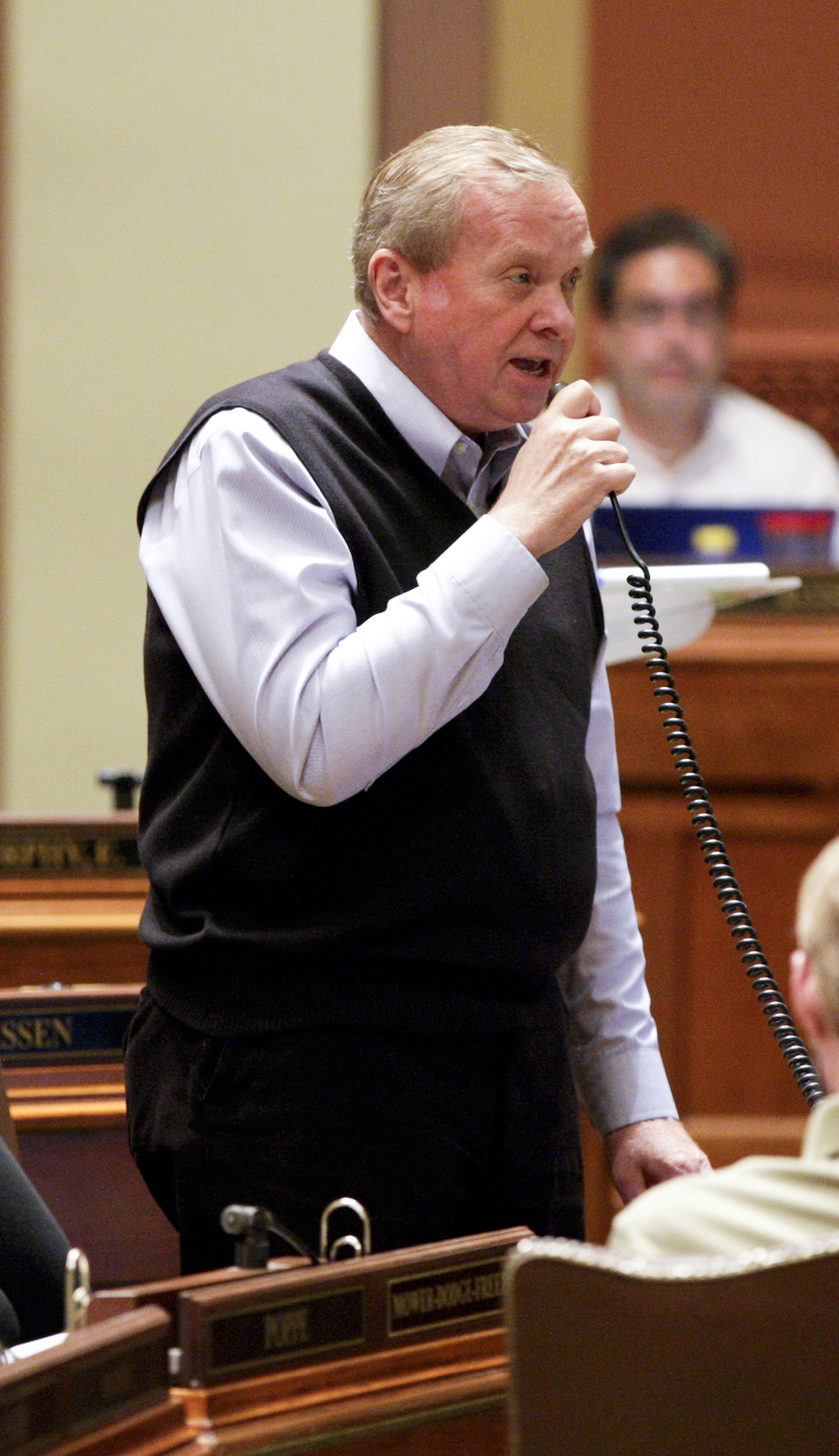Higher education budget on its way to governor

A budget bill that would freeze tuition for some, but not all students attending state colleges and universities is on its way to the desk of Gov. Mark Dayton.
In a 71-57 vote on Sunday, the House passed a plan to increase higher education spending by $166 million over the next two years. Earlier in the afternoon, the DFL-controlled Senate passed the same bill by a 57-8 vote.
The bill does not provide all of the funding that University of Minnesota and MnSCU officials had requested to cover a tuition freeze. House DFL legislators voted against the bill, with many saying its partial funding of the systems’ requested tuition relief assistance amounts to a tax on students and families.
“When you raise tuition and people have to take out debt, it’s like charging people interest on those taxes,” said House Minority Leader Paul Thissen (DFL-Mpls).
The bi-partisan agreement the House and Senate conferees reached late Saturday is one that “in the end will be able to help students keep their cost of education down – that helps not just the students themselves, but many of their families who help pay for their education,” said Rep. Bud Nornes (R-Fergus Falls), who sponsors the bill along with Sen. Terri Bonoff (DFL-Minnetonka)
 Rep. Gene Pelowski, Jr. speaks in opposition to the higher education conference committee during May 17 floor debate. Photo by Paul Battaglia
Rep. Gene Pelowski, Jr. speaks in opposition to the higher education conference committee during May 17 floor debate. Photo by Paul BattagliaIncluded in HF845/ SF5* is a $30 million boost to the University of Minnesota’s medical school and $22 million in tuition relief to students attending all five university campuses. U of M President Eric Kaler has reiterated to legislators throughout the session that he will ask the Board of Regents to increase tuition by as much as 3 percent each of the next two years if the state doesn’t fully fund the $65.2 million request to freeze tuition.
MORE: View the fiscal spreadsheet for the bill
Most of the increased spending contained in the bill – $100 million – would be dedicated cover a tuition freeze for students who attend two-year MnSCU colleges and four-year state universities students in the second year of the biennium. MnSCU officials asked for $148 million to completely cover a tuition freeze for the next two years.
The conferees also agreed to increase the funding for the state grant program by $7 million. The House’s original omnibus higher education bill would have reallocated $53 million in existing surplus from the grant program to dedicate to MnSCU tuition relief.
House moved up, Senate moved down
As the conference committee began its work earlier this month, the House and Senate were nearly $148 apart on their higher education spending targets. On Thursday, House Speaker Kurt Daudt (R-Crown) and Senate Majority Leader Tom Bakk (DFL-Cook) announced a deal they struck with Dayton to agree on a higher education budget that would spend $3.05 billion over the 2016-17 biennium.
The final bill would appropriate $1.25 billion to the U of M, $1.35 billion to MnSCU and $467 million to the Office of Higher Education - which is tasked with administering and disbursing state grants and other forms of financial aid to college students.
The $166 million increase in higher ed funding from the forecasted base represents a landing point between the targets the House and Senate approved late last month, but is still much lower than Dayton’s $288.4 million original recommendations that would have covered requested tuition freeze assistance for the U of M and MnSCU.
The House bill would have increased spending by nearly $56.8 million ($2.95 billion in total spending), while the Senate version was at $205 million (nearly $3.1 billion).
Other notable provision in the bill include:
- Creation of a $5 million pilot program to provide scholarships to income-eligible students at vocational schools and community colleges who maintain good academic standing and participate in a mentorship program. The conferees adopted this provision in lieu of a Senate provision that would have provided free tuition on a larger scale, but with the same strings attached;
- Creation of a statewide, uniform campus sexual violence and harassment policy, which would regulate how colleges and universities deal with allegations of sexual violence or harassment involving students. The bill would allocate $80,000 to help schools implement the program, which among other things would require educational institutions to make a trained victim's advocate available, coordinate with local enforcement, and make it possible for students to report incidents online. The program would also require schools with health centers and clinics to screen students for sexual violence;
- $3 million increase to concurrent enrollment programs;
- $1 million dollars for Alzheimer’s and dementia research at the U of M; and
- $1 million spinal cord research grant program to be awarded to state colleges and universities on a competitive basis.
Left out of the program was a $1.5 million increase to the U of M Crookston campus to expand its agricultural and health science center, and $1.4 million to improvements on the university’s Morris campus.
Debate over who increases tuition
State tuition relief to backstop the rising costs of college has become a major theme in higher education discussion. Several Republican House members on the higher education committee tried to make the case that the University of Minnesota could stave off tuition increases by increasing non-resident tuition.
Rep. Glenn Gruenhagen (R-Glencoe), who served on the conference committee, unsuccessfully offered an amendment that would have requested the Board of Regents raise tuition on non-resident, non-reciprocity students by $3,000 per year. He said such a move would more than cover the cost university officials say they need to freeze tuition for resident students. Gruenhagen pointed out to conferees Saturday and again on the House Floor on Sunday that non-resident, non-reciprocity students at the U of M pay the 13th lowest tuition among Big Ten Conference schools. A $3,000 increase per year, would move their cost of tuition to the middle of the pack.
“It appears the taxpayers of Minnesota are subsidizing the non-resident students, which includes foreign students attending the U of M,” Gruenhagen said. That’s especially concerning when we know the U turns away some students who are children of Minnesota taxpayers.”
Related Articles
Search Session Daily
Advanced Search OptionsPriority Dailies
Ways and Means Committee OKs proposed $512 million supplemental budget on party-line vote
By Mike Cook Meeting more needs or fiscal irresponsibility is one way to sum up the differences among the two parties on a supplemental spending package a year after a $72 billion state budg...
Meeting more needs or fiscal irresponsibility is one way to sum up the differences among the two parties on a supplemental spending package a year after a $72 billion state budg...
Minnesota’s projected budget surplus balloons to $3.7 billion, but fiscal pressure still looms
By Rob Hubbard Just as Minnesota has experienced a warmer winter than usual, so has the state’s budget outlook warmed over the past few months.
On Thursday, Minnesota Management and Budget...
Just as Minnesota has experienced a warmer winter than usual, so has the state’s budget outlook warmed over the past few months.
On Thursday, Minnesota Management and Budget...